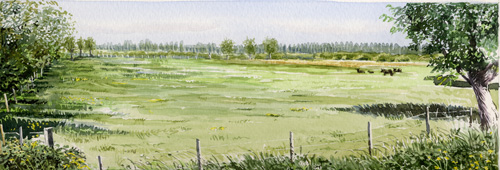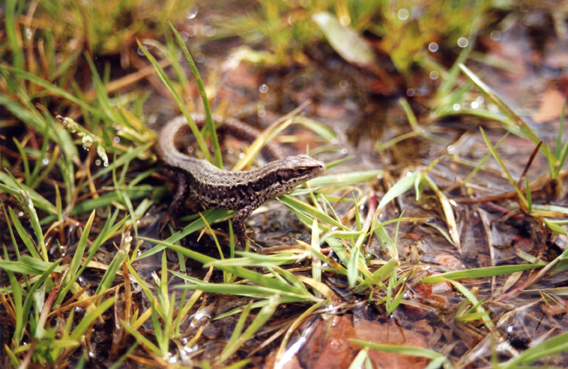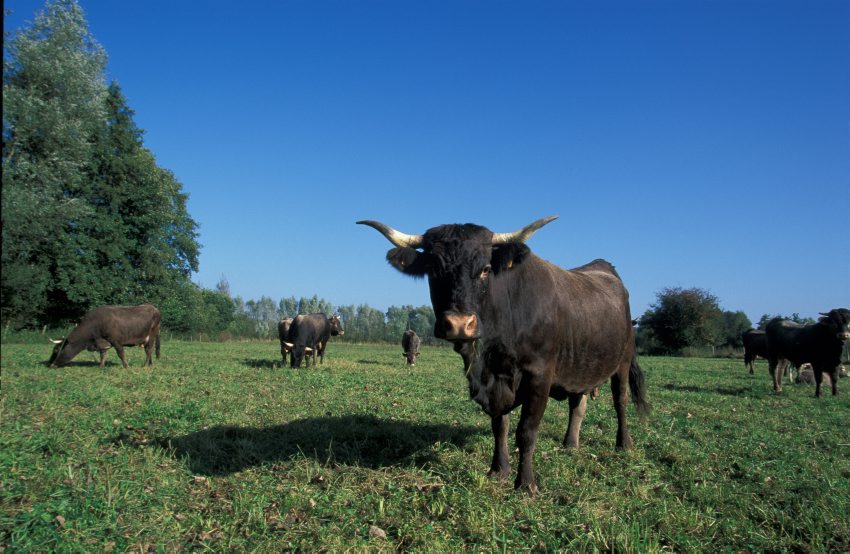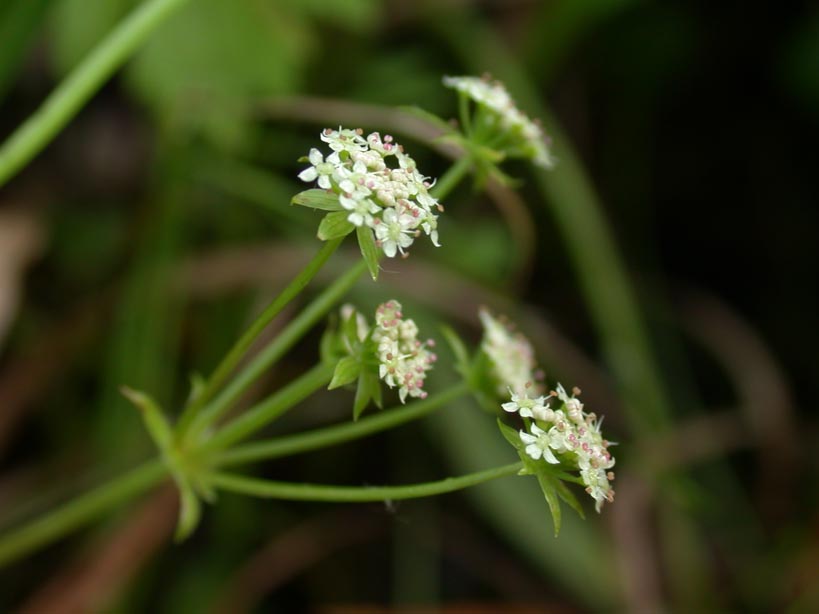The Marais de Sonneville at Wandignies-Hamage
 | |
Covering 11 hectares, the Marais de Sonneville at Wandignies-Hamage is one of the best preserved areas of wet grassland on the Scarpe Plain. The Scarpe-Escaut Regional Nature Park acquired the site in 2001 with the aim of conserving its exceptional natural and pastoral heritage using traditional land management techniques, with a particular focus on ecologically sustainable pastoralism.
| |
In the past the marshy grasslands of the Scarpe Plain were valued for grazing and cutting and the Nature Park wanted to continue this tradition. There were no longer any local breeds of cattle suited to wetland environments, but experiments carried out with the Aure et St Girons breed in the Indre and the Gironde regions provided a solution. This breed, also known as ‘Casta’, had demonstrated its capacity to thrive in wet conditions. Not only is it satisfied with grazing on poor pasture but it is also good beef cattle.
| |
 | The Park has achieved both the preservation of rich natural heritage and the development of a farming practice that respects a unique environment.
Casta cattle pasture from the end of April to the beginning of November and adapted to the wet grassland conditions without difficulty. More than 25 calves have been born since 1996, which has meant that livestock farmers can generate an income. The task that remains for the coming years, over and above gaining further experience, is to promote the quality of the beef that is produced.
|
To preserve all the natural habitats of the Marais de Sonneville, the Scarpe-Escaut Regional Nature Park also undertakes other environmental and land management operations such as employing traditional methods for looking after old willow trees, maintaining the historic water supply network, cutting the reed beds, etc.
|  |
 | Ecological monitoring carried out on the site since 1996 reveals that the land management practices applied, especially grazing Casta herds, has meant that the natural habitats have been cared for and developed, bringing the total number of plant species that can be found there up to 170.
|
The Marais de Sonneville is a mosaic of short grassland plants, tall marsh plants (clumps of sedges, rushes and reeds) and aquatic plants (growing in cattle ponds, drainage ditches and old waterfowl hunting ponds). This rich diversity of species is recognised at a European level as its place in the Natura 2000 network proves. |  |









